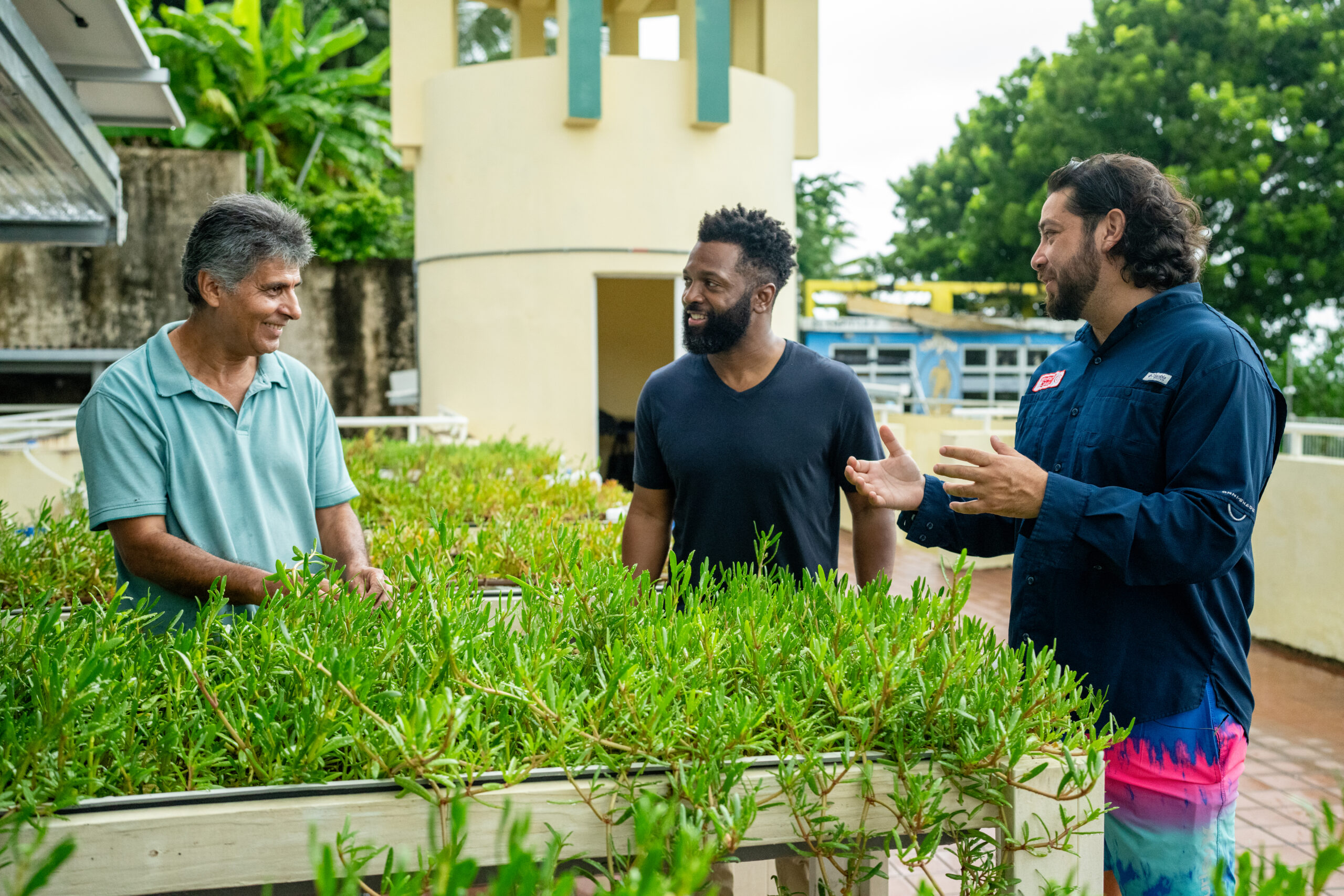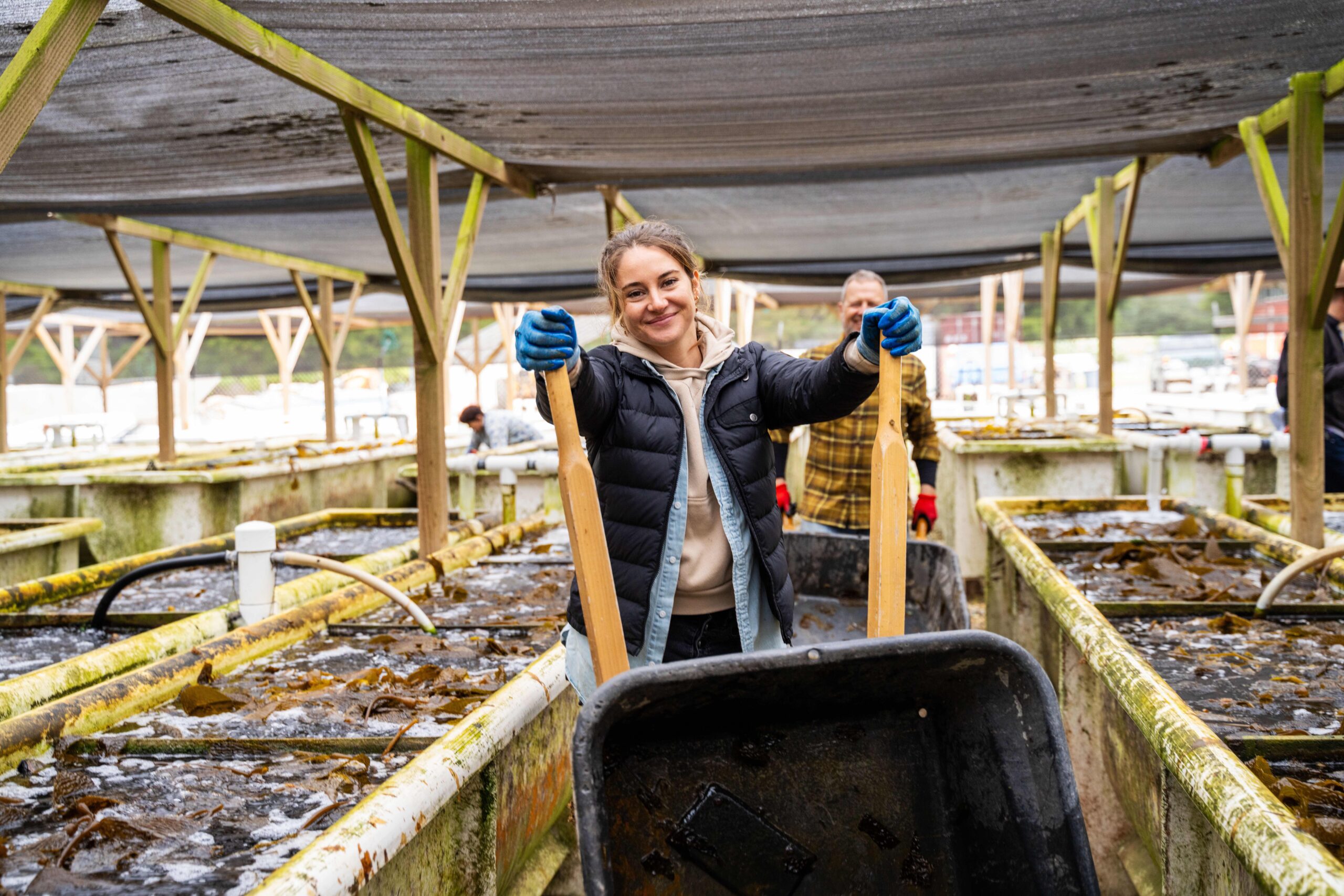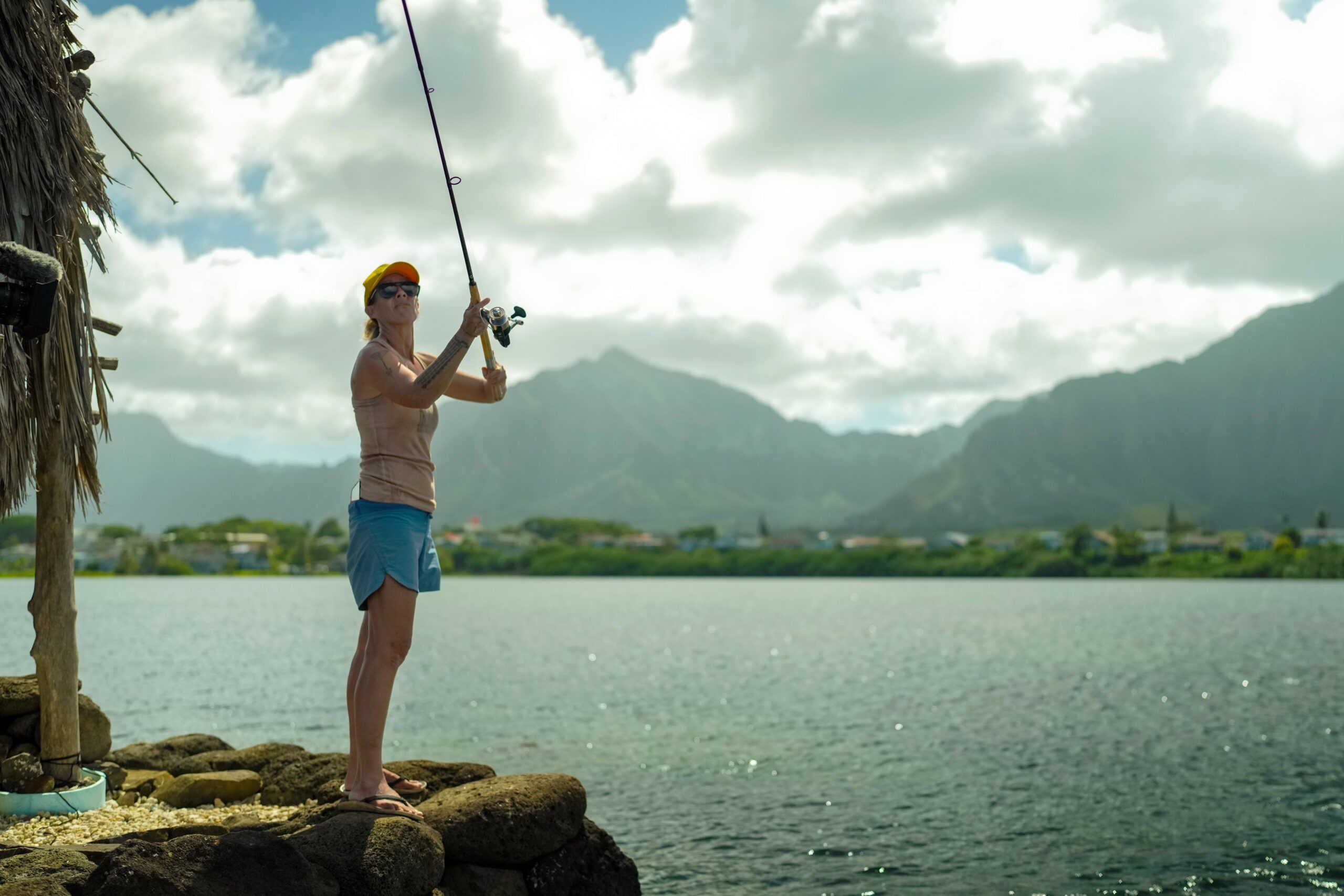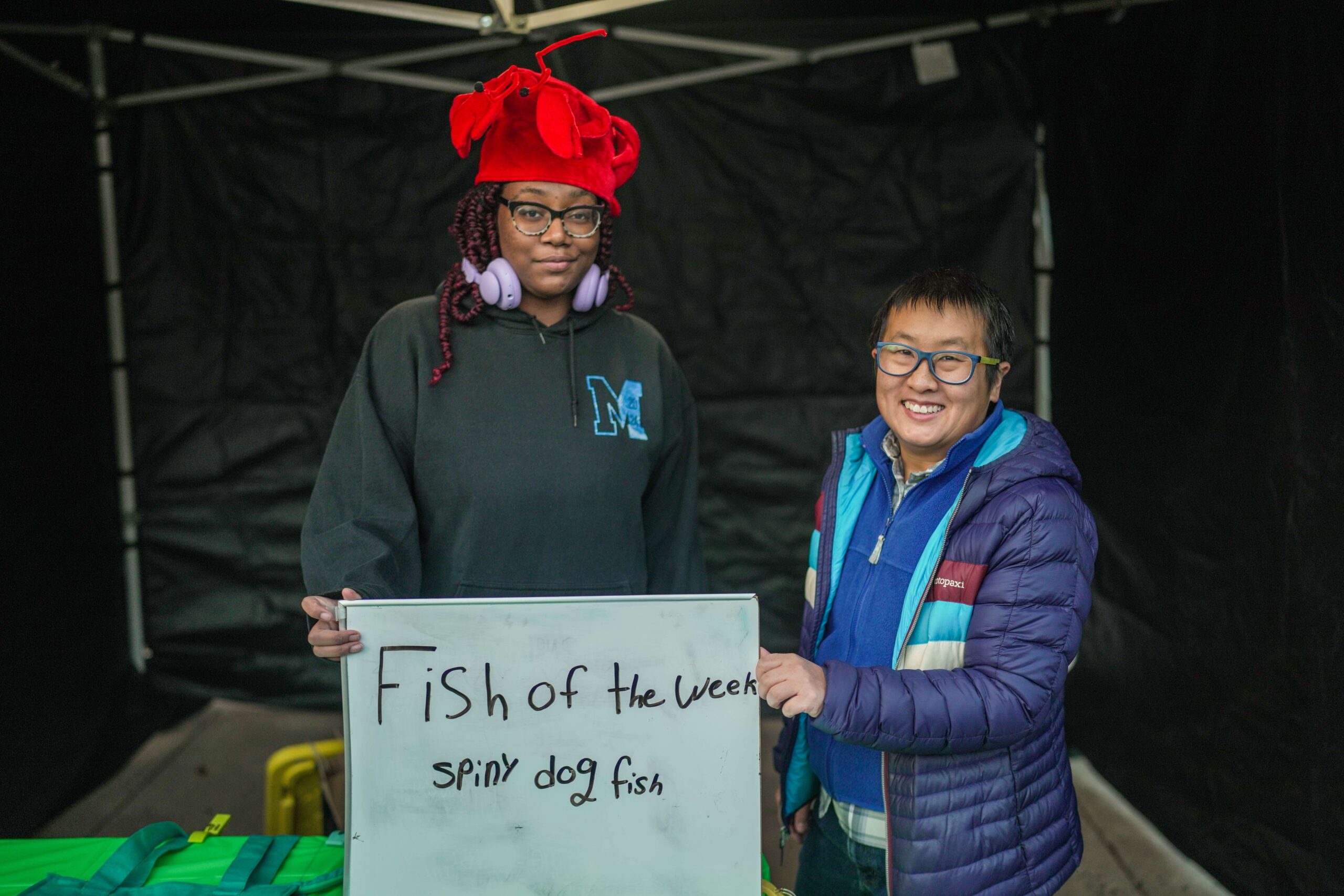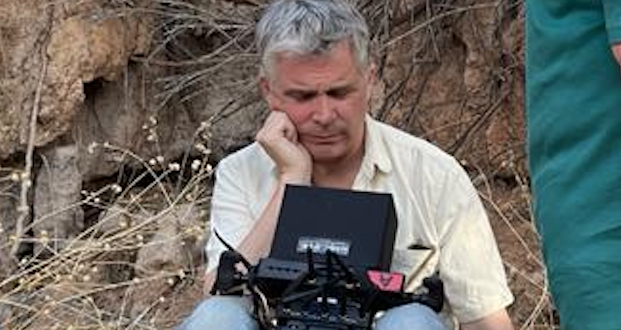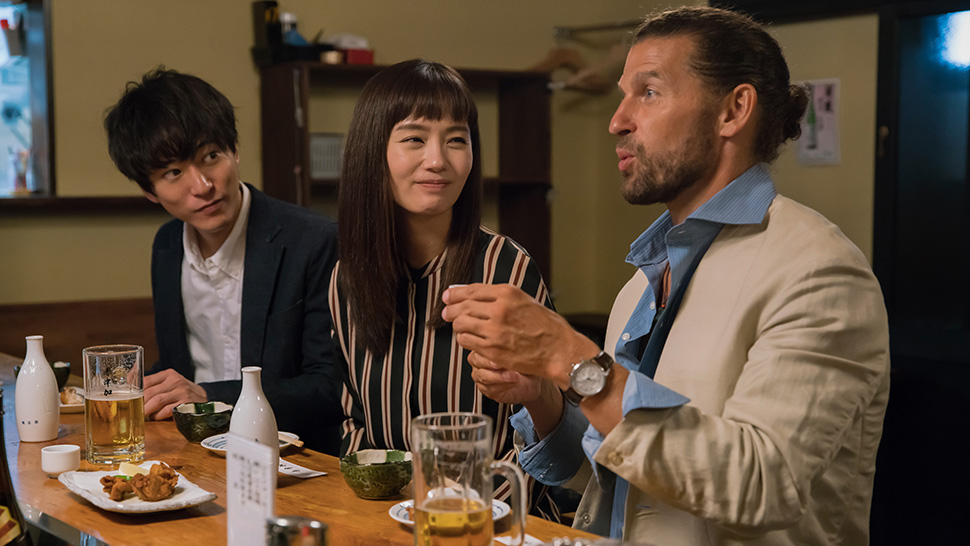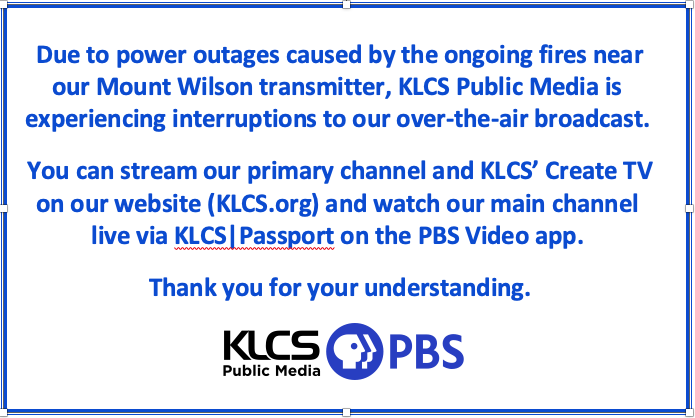Dive into “Hope in the Water,” a groundbreaking PBS series unveiling vital insights into ocean conservation. Produced by renowned chef Andrew Zimmern and by David E. Kelley, who makes his first foray into the unscripted world, this show illuminates our shared responsibility to safeguard our oceans. Get an exclusive sneak peek of Episode One: The Fish in the Sea, filmed along California’s coast, featuring acclaimed actor and activist Shailene Woodley. Join Andrew as he merges his culinary and television prowess to ignite transformative action. Don’t miss this opportunity to discover actionable steps in preserving the precious ecosystems of our oceans.
I don’t think I am overstating this when I say: This may be the most important show on PBS this year. I believe it can benefit the environment by giving individuals who think they can’t help the planet, a way to try to take action. Have you thought about how this show can show people a way to help in their own lives?
It’s very prescriptive, within the stories themselves, whether it’s about the box of fish that’s being distributed in Philadelphia through the Fishadelphia people, whether it’s the two hours to take out of your Hawaiian vacation to tour, a 1,000 year old Polynesian pre-Hawaiian aquaculture system, just being able to advocate for “no take” zones, or the wisdom of eating smaller fish with the heads on it. You don’t need to engage in the high science of reproducing saltwater organisms in a terrestrial environment to simply be a better shopper in the supermarket or diner in a restaurant and asking where your fish comes from. And if the restaurant or supermarket can’t tell you, there’s something wrong there. So it’s extremely prescriptive. But there’s also a massive capital campaign that’s being launched in conjunction with the series that will be providing access to all this information – curriculum based, in schools across the country. In supermarkets, in restaurants. The massive capital campaign attached to this series that will be educating people around the blue dots in their supermarkets, restaurants who choose to put it on menus to let them know that these are safe seafood choices. The point of the series at its very core is – “How do we protect our oceans and produce out of them at the same time?” And our lakes and streams and rivers and other habitat. So, we wouldn’t be fulfilling our duty without making sure that people leave every episode with inspiration, but also concrete takeaways, without looking into the camera and telling people, “Dial this number.” We are, I think, doing the right thing by demonstrating to people what’s going on all around them to protect and preserve our oceans.
Have you always been concerned with the environment and the impact of one’s daily choices on the livelihood of the planet?
Always. I grew up on the ocean, my mother wrote books about shells. So it was an extremely big part of our lives. Of course, I took it all for granted. I happen to be sort of starting my TV career at the right place right time – 22, 25 years ago. My first couple of years making TV and traveling and seeing food stories out in the world and not doing it from behind the stove was a very quick education and a masterclass in what the reality is. Standing on a 15-foot skip in a harbor of a medieval Italian city and watching a 60 year-old fisherman pulling his line by hand, with 20 pounds of small little fish trapped with netting that he had set from the night before. And asking him if this was a good catch and he said, “It is today, but 20 years ago I’d catch 150 pounds overnight.” I said, “What are you telling your grandchildren?” “Well, they’re in school and they’re on laptops, I’m glad they’re not getting into this business. My son and I will be last in our line to do this job.” And I said, “Oh, how long has your family been fisherman?” He points to a 1,200 year-old church tower that you can see from the boat and he says, “At least that long.” And when I ask, “Why so little fish?” He points in the other direction and you could make out, in the horizon, what I thought were cruise ships. He said, “Those are big ocean trawlers, Chinese vessels, outside of our jurisdiction just sweeping up everything. So there’s no fish for us. The ecosystem in which I’m fishing now, this little bay, has changed.”
He thought that the trawler was netting all the little fish that used to be where he was fishing. And to some degree that has an influence on it. But that Chinese trawler was scooping up different species, larger ones, etc. The reason that this fisherman’s little fish, that he typically would be able to sell to the local market and that housewives would put in their zuppa di pesce, or they would fry up in their fritto misto, [were in decline] was the salinity in the water had changed, it was because the temperature of the water had changed. So fish that were normally pulled out in his nets were another mile out to sea, and probably eaten by those larger fish that those Chinese trawlers were pulling up. And the chemicals in the water that shouldn’t be there from going into the ground and then into the water table, all those things, it’s never just one thing. But the fact of the matter it’s a very, very tough environment. So growing up and hearing those stories and be able to tell those stories in the beginning of my television career, certainly made me much more aware of the impact of our climate crisis, that overfishing, maritime laws, poisoning our water system by what’s leeching into it from land-based farming, I think I was probably aware of these things more most people.
How did this show come about with David E. Kelley?
I called him and asked him. But it’s a very, very funny story. The founder of Fed By Blue at the time was working as a consultant for an aquaculture company. And she sent me a salmon, and I almost didn’t eat it. I almost gave it away, because, this was 12-14 years ago. The quality of farmed fish back then was very poor and the issues with aquaculture were many. It was not a clean, sustainable system back then. And she was working with a company that was really trying to change that. They were putting fewer fish per square meter in a pen. They were feeding them in a different way. They were trying, every year, to find food that would eventually be on a one-to-one ratio with harvested pounds. They were eliminating netting that was poisoning the water. They were doing all the right things. It was just going to take a couple years to see the net effect, no pun intended. But I tasted this salmon and I was like, “Wow! That’s a lot better than the other salmon that I’ve eaten.” And the next couple years she kept sending me salmon and it kept getting better and better and better; so she and I started working on different projects where I would try to educate people on the changes of the aquaculture system. I became quite a geek about it and when the feed system began to change from 12-to-one to eight-to-one to four-to-one, to one-to-one, so that for every pound of fish that an animal ate during its lifetime, we had a harvestable pound. That’s a clean system. We weren’t robbing Peter to pay Paul. If you’re grinding up one kind of fish to feed another, but it’s eight to one, 12 to one, four to one, it doesn’t matter, it’s not a sustainable, clean system. What I started to see was seven, eight years ago – an industry that really, I thought, was capable of changing the net-net effect of climate crisis and hunger was having on our planet. So, we put together a group, this was eight years ago; we went down and gave a talk at SXSW. And I met Dave the fisherman; and Dave the fisherman owned a company that was selling trout, farm raised trout. And I tasted it and I was blown away, “This is the best farm-raised trout I’ve ever had in my life.” It was extraordinary, and the next year Dave the fisherman, he seemed to have a lot of people asking him questions about movies and television. I found out that the guy who I had been on the panel with the year before, who I spoke to on the phone a couple times in that ensuing year getting ready for year two, because we took the show on the road again and we gave another talk the following year at SXSW, it was David E. Kelley! And over the years we developed a friendship and at a certain point in time, we’d always talked as a group, we collectively ought to all make something that has a more lasting impact, more important in this world. We need to really step it up. And I said, “We’re going to be the lead, I do production services, would you join us and help us with our storytelling; you’re a television legend.” And then he said to me, “I’ve never done unscripted TV, he said, ‘You’re actually the unscripted television legend. “ I said, “Well, you’re the most awarded scripted person in the universe, so how about we join forces?” We laughed about that. He said “yes” basically right away. And to be able to work on this project with him, I have to tell you, I was in a meeting with him a month ago where he was giving some notes on one of the episodes, and it was a master class in television storytelling. I gave his notes to just about everyone I know in the TV business. I said, “This is David E. Kelley’s wisdom about how to create more urgency in storytelling, which is captivating more viewers.” And so working on this with him has been a great delight. But what’s incredible to me is that to me he’s just Dave, because you always think of them as to how you met them originally. I never think of him first and foremost as a TV guy the way the rest of the world does. He was my panel mate, he became my friend before I knew he was in the TV business, he was Dave the trout farmer. We were on this panel together. I don’t judge people, but I’ll be honest with you, while he was talking at one point in year-one, I thought “Gee, this trout farmer is super bright (laughs).” Obviously you don’t want to judge books by their cover.
But you knew he was David E. Kelly.
No, I did the second year. The first year he was just an invited panelist, I don’t know what David E. Kelly looks like.
What did you learn from doing this show and has it changed you or your life in any way? Are you doing things differently to try to be more helpful to the environment?
I don’t think I could get much greener than I was before hand. But I also would be lying to say with every year we’ve tightened the green belt a little further around our world. I’m not sure it really has to do with creating and producing this show, I think what it has a lot to do with is just being more aware of the net-net benefits of voting with our diets. We make choices by what we eat and what we serve to our family and friends. And we can create so much benefit in this world by advocating for cleaner food systems, more sustainable food systems, advocating for those that don’t have as much as we have. And the answer really is in our oceans. Jacques Cousteau very famously said we have to co-exist with our oceans and we must, in order to protect them, produce from them. When you look at the simple fact that in 20 years it’s estimated that Americans are going to eat more seaweed than we will potatoes; it’s a staggering thing, but seaweed [consumption] in this country is going up by double-digit percentage points, every year, in many, may different ways. But it’s giving livelihoods to people who work on the water that were struggling before. And as lobster move north ,seeking out colder water, and lobster men are going to be yielding fewer and fewer animals, we’re going need those lobstermen to have an alternative sources of income. Luckily you need the same equipment to lay lobster traps that you do to lay lines to grow seaweed off of ropes. And some lobstermen, currently in the state of Maine, are making more money in seaweed season than they are in lobster season. And they’re investing more dollars in equipment for that which is a great thing to see.
Shailene Woodley was perfectly aligned with this show. How did you decide and know to find her as the point person to help tell this story? How did you determine who would host each episode?
We have great directors, great casting folks, great leadership at our production company. And when the team identified Shailene, I was not involved with researching who might be good. lt was an obvious thing to get my friend Jose Andres involved, or Martha Stewart, but when everybody said, “Hey, what about Shailene Woodley?” I was ecstatic. I was just on a panel with her a couple weeks ago in Los Angeles for the TCA (Television Critics Association) for PBS and she (laughs) said, “I’m not an environmental activist.” And I jokingly said to her backstage, “When this show airs, you may have to add that title to your resume.” She is a very powerful and thoughtful communicator, she is committed to all of this in a very strong way and I’m thrilled that she said “Yes” and has been as committed to this project before, during, and after shooting.
Will there be another season? This could be a regular PBS series because our planet’s health is an ongoing story and there is so much to cover and so many stories to tell.
I hope we have the opportunity to do that.
In the first episode with the South Philly kids going to see fisherman and learn where their seafood comes from, it is not something we see typically see. Usually we see a fieldtrip to a garden plot to have kids connect with their food, but we never see them connect to seafood. I was thinking this type of fieldtrip could be combined with the purple urchin issue.
When I said before that every moment in this show is prescriptive but also inspirational. The point in making this, my desire, is that there are people who sit there and see that and say, “Oh! We could do that in our town too.” There’s a spiritual parable that the Dali Lama loves to quote, I’m paraphrasing here, “One man can’t save everyone but the idea is that you can illuminate and teach and hope that those people go on.” And the great thing about making content, whether it’s a post on Instagram, or whether it’s a multi-part series on PBS, that as a storyteller and a maker, I’m hoping that others are inspired to move forward with this and take up some of this work.
Perhaps someone will want to coordinate a Save the Ocean Day. Or have you thought of yourself organizing a national Save the Ocean day, connecting restaurants to help eradicate the purple urchin with volunteer scuba divers?
I think when people see this that will happen very naturally, I don’t think I’m going to have to do a thing. My experience has been when you tell the story, someone looks at that and says, “Wow, there’s a business.” It’s one of the benefits of capitalism; if you can make a dollar at it somebody’s going to go and do it. And you look at how beautiful that urchin is and you realize there’s so much of it, I think we will find that those urchins will get picked up pretty darn fast.
Except the sea urchin farmer, we’re going to need more of him, because he was the one guy who knew how to grow them.
The beautiful part is that there are places all over the world who are looking at growing all of these animals. We have someone here. My favorite story, because I live in Minnesota, is Minnesota shrimp. You can grow shrimp anywhere on planet Earth. We’re a landlocked state on the Canadian border, it gets cold here in the wintertime and we have companies that are growing shrimp in old shipping containers. What a fantastic idea, this means jobs to a community, it’s an ingredient that people associate with a high price that can be created to scale in a low cost environment in a part of the state that needs jobs. And that means more inexpensive healthy food on people’s plates. So I think we are hopefully going to be inspiring generations of people to get out there. You opened up this interview by saying you thought this was the most important show on PBS this year. Look, I’m biased, but I happen to agree with you for that very reason, because this show is a big boulder thrown into a pond that will create ripple effects that hopefully will be felt for years and years and years.
There was a book I read as a kid by Frances Moore Lappé, watching this made me think about the distribution of food; we have enough food. I don’t know if you read that book or not? It’s titled “Diet for a Small Planet.”
Yes. We have plenty of food, we waste so much of it, and we, also, are eating too much of the wrong thing and not enough of the right thing. So, when that happens we are then burying food that might otherwise be eaten and obviously there’s many facets to this problem. Having spent a lot of time in the central coast in California where the largest farms in America producing food for human consumption exist, I can tell you I’ve watched front loaders burying fields of ripe fruit, burying fields of green vegetables, burying fields of lettuce because there is no one there to pick them because under the Trump administration they curtailed the number of visa available for farm workers to come across the border. That kind of short sightedness in the face of childhood hunger here in America, to me is genocidal, it’s not just criminal, it’s awful.
So many of us are trying to use less waste, and buy local produce, and eat less meat which might mean more seafood, Seafood, like you touched-on is the one thing we can’t control how to eat local; the shrimp at Trader Joes’ is from Thailand. If there was more education like this show, average people could really help turn the environment around. Maybe coordinate an effort with local restaurants, which are like the front lines. This show provides answer, so hopefully someone will connect the dots on a local level.
I think they will and whether it’s because someone can make money at it or because somebody believes it can be a phenomenal non-profit or educational tool, to me that doesn’t matter. What matters is that this thing has that ripple effect and I think that we are going to see it.
The Philadelphia scientist said, “I’m interested in using fish as a vehicle for justice.” How did you find all the passionate people that were interviewed?
It really is a phenomenal team, phenomenal casting. We have great writers and directors, we have great casting people. When people say, “This is such a great product, how do you do it?” I’m like, “Do you think I’m in a room by myself trying to figure this out?” I’m so blessed to have a very large and talented team at my production company that makes me look good all the time. And like a lot of other people in my position, I am a broken record about this because it’s not one person. There’s 40 people working on this show. I’m just lucky that I did one smart thing in my life when it comes to this TV work and that’s a really, really simple thing: I hired some smart people and when they tell me we need o do something, I listen to them.
That was my next question, but I won’t ask it, because you found the professor in Iceland too.
The professor in Iceland, that’s just so hysterical. We’re so lucky that we live in a world that is populated by so many folks doing so many cool things. I’d love to say that took a lot of work, but some of those stories were just about going on to the Internet, googling some stuff, talking to someone and then they led us to one other person and they led us to that. At one point we had 70 stories on the board and we only could tell a couple in this show. It’s amazing.
Well, hopefully, those stories will go to another season.
Like I said, I hope we have the opportunity to and I think that PBS would be short-sighted to not do that, but we’ll wait to see what the audience thinks of it.
The abalone farmer was also a great sound bite when he said make things like an “open source code,” I thought this show is that. Hopefully he can get help, if word spreads, and someone can take the lead in removing these urchins and making it the next delicacy on our tables in the future.
I’d like to think all documentaries are like that; in the best possible way you are inspiring people to go and move-on and do that. One of the benefits with our type of story telling is we have so many of these stories that we are capable of telling over the course of three hours, yes, I wish we had room to tell more, but it’s a great mix of stories.
When you started out in TV, did you ever think you might do a show that could literally help with the planet’s environmental crisis? Because the show provides tools and information about how we can do our part.
When I started in television it was because I had things to say I and I wanted a bigger audience. And that’s the honest-to-God’s truth. I told people, “I’m going to make television.” And they told me like, “You’re crazy, you’re a chef.” I said, “Well chefs are at the forefront of public health policy, of wage equity, of sustainable food systems, of aquaculture, immigration reform, we’re living it every single day at the front lines as a chef in a restaurant. And so in a sense I did, I just didn’t know it was out there, but in a way, and I’m not saying this egotistically, I think I always saw the possibility and I’ve always been a big dreamer.
I ask this of all the chefs for the Chefs’ Corner – Do you have a Julia Child story or did she influence you in any way?
Julia Child is, I think, the reason a lot of us are in this business. Julia Child’s cookbook part one and part two with Simone Beck, because I think everyone forgets that Julia Child had a writing partner and a cooking partner for her classic book. I think what’s really interesting is that when my parents said, “Oh yeah, go ahead and cook, you can cook dinner Saturday.” That was the first thing that I wanted to grab, and I am so much a product of the Julia Child world in the sense that when I was 10, 11, 12, 13 years old – her books were the ones I cooked out of. When I was 14-15 years old, it was my chance to cook out of them again with my parents to refine what it was that I was doing. When I was cooking dinner for my friends for dinner parties in high school and college, I still made the dishes, I didn’t look at the recipes anymore; I haven’t for 45 years, because her ratios and her techniques are engrained in me. Her soufflé recipe and ratio is my soufflé recipe and ratio. There are just so many classic dishes that I basically showed up in restaurants in my high school years looking for work during the summers, and in college and overseas when I was on a leave of absence from school [self-imposed or imposed by the school itself for not doing the work I was supposed to be doing, mandatory semesters off] I was able to get jobs in restaurants because I learned how to cook out of her book. I owe her a debt of gratitude that I can never repay.
Did you think you’d take after her and be on PBS and teaching people about food and ways to help the environment?
No, no. I never did. It’s an incredible legacy and not just her on PBS, but all the other chefs that were on PBS as well. Jacques Pépin – when people say, “Whose your mentor?” Well, my grandmother, I name a couple of chefs who I worked for in restaurants, but more Jacques Pépin, because of what Jacques Pépin did for me with his books. When I saw that there was a good-looking young man making food and having this excitement about it, excited me when I was a young man. And then best of all I got to meet him through my father’s business, so he inspired me to keep going. And then when I got on television, I got a chance to be friends with him, where we’ve actually become very close friends and over the years I’ve probably learned more from Jacques Pépin about life than anyone else. In fact, some of my biggest struggles in life as a human being and as a father, Jacques Pépin is the person who coached me through them. So because of his relationship with Julia, I’ve probably felt my strongest kinship to the PBS world.
What’s your easy go-to healthy dish?
Oh my gosh, I make the same Thai salad and I do it with pork, with fish, chicken, beef. I grill it or I flake it or slice it, with cucumbers, celery, red onions, tomatoes, lettuce, toasted rice powder. I make a fish sauce dressing, very traditional one – lime juice, sugar, fish sauce and chilis and the most important ingredient – toasted rice powder, which is so easy to make and I keep a jar of it in my pantry. And it is my go-to thing. It has a teaspoon of oil, just enough dressing for two people; that’s the only oil that’s in it. And it has one teaspoon-and-a-half to two teaspoons of sugar in enough dressing for two people. And that’s the only thing in it that isn’t absolutely stellar for you, so overall I think it’s a very healthy dish.
Anything you’d like to add?
I would just tell people to understand that the key to life is when there’s a problem, it’s not necessarily to walk away from the thing. We have these oceans, we know the problems associated with our climate crisis, with feeding our hungry planet, we know the problems with the way that we’re polluting those waters, that we’re not fishing the right way out of those waters. But there’s so many people doing the right things out there and the solution isn’t to remove yourself from that environment. The solution is to work with that environment to keep all the players sustainable and I think that’s one of the great lessons that this piece of work has taught me.
“Hope in the Water” premieres June 30th on KLCS Public Media; visit our website, klcs.org, for the complete schedule.
To learn more about the series, the people and organizations featured in this series visit the PBS blog.
Stay up-to-date with Andrew Zimmern by visiting his website: andrewzimmern.com, subscribe to his YouTube channel or follow his social media: Facebook, Instagram & Pinterest.

